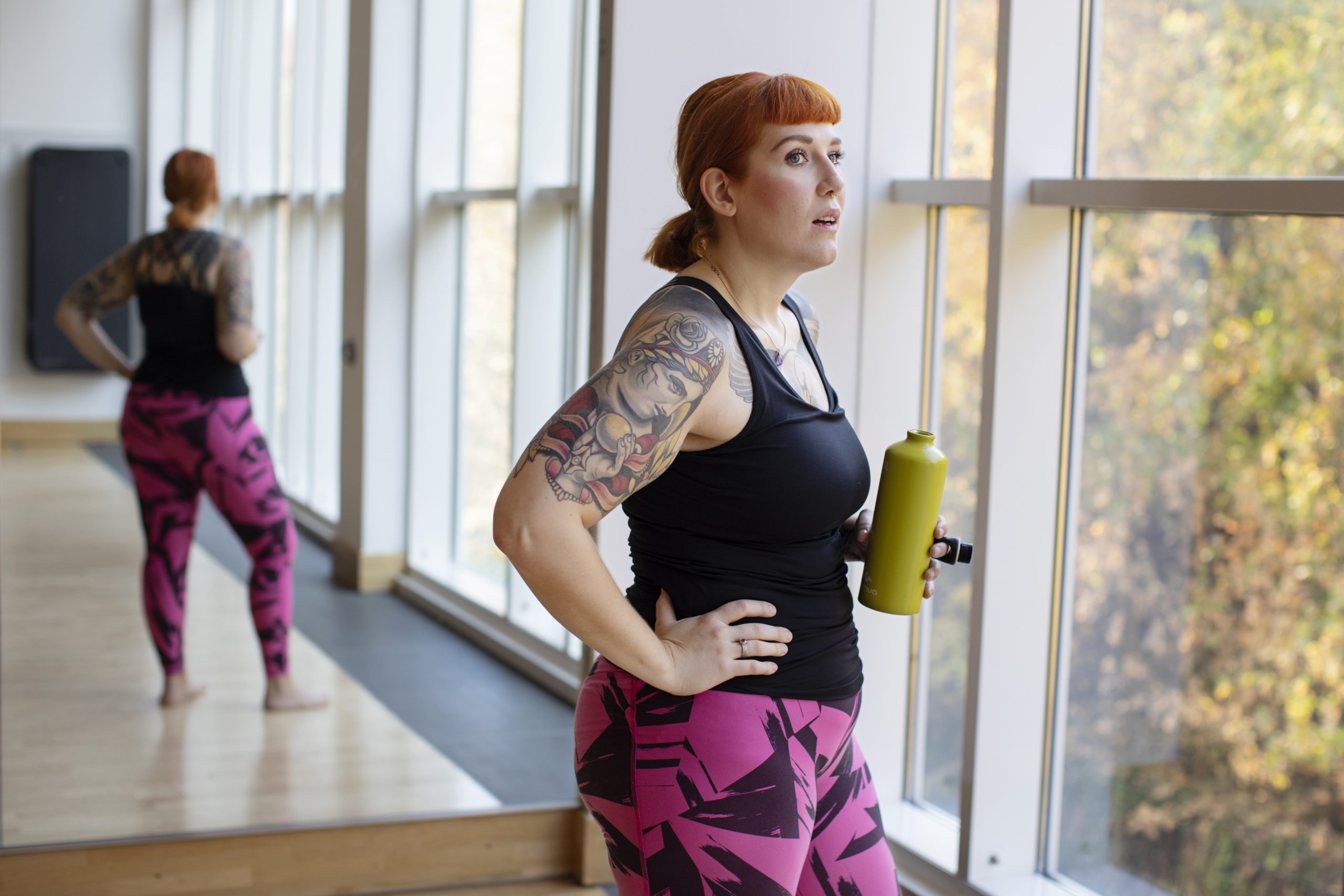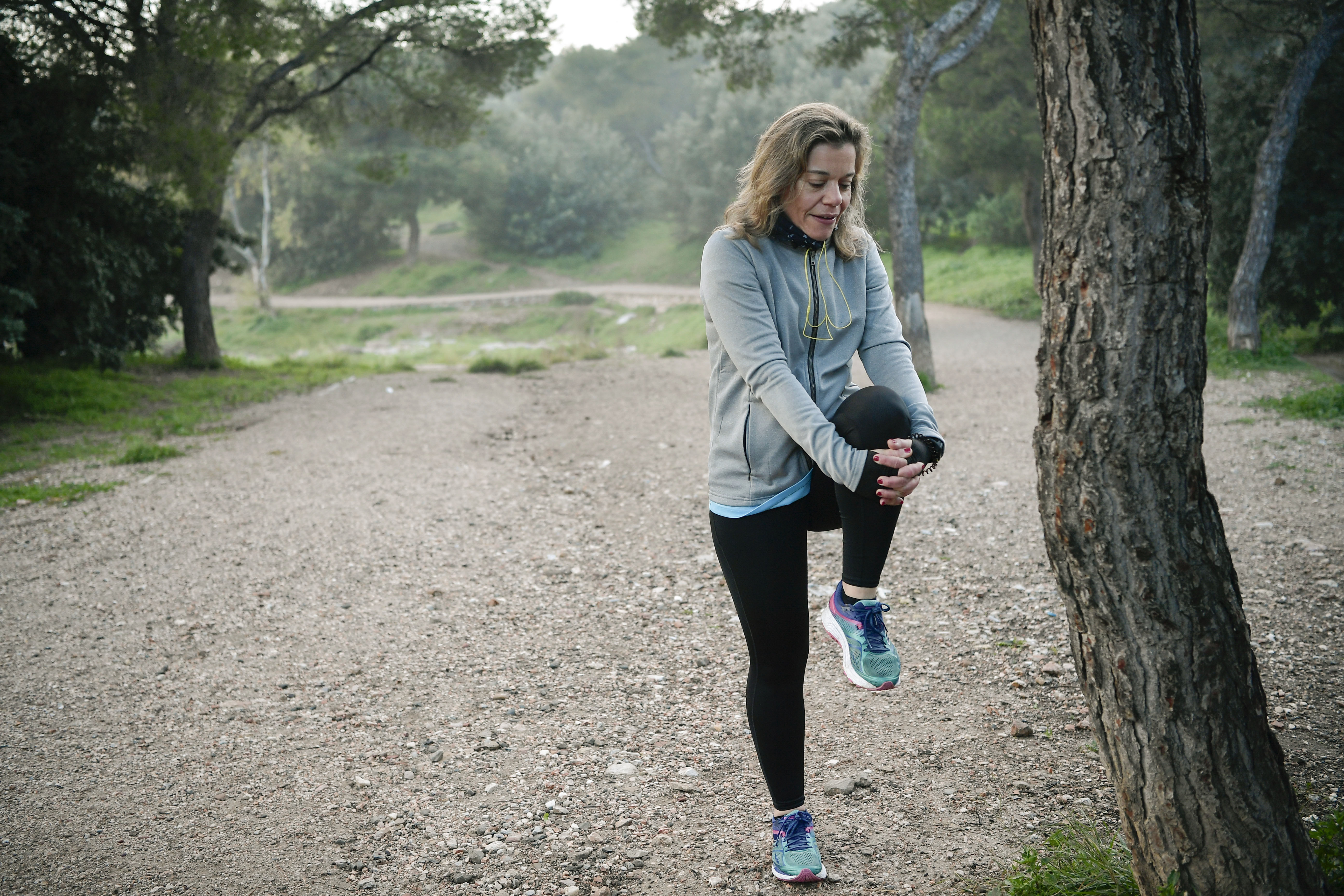Weight-loss plateau: How do you beat the diet plateau?

A weight-loss plateau happens to everyone on their way to losing weight for good, no matter how consistent their diet and exercise routine is.
When it comes to long-term weight loss plan, there comes a point where all the healthy eating and exercise just isn't making a difference anymore. This is called a weight-loss plateau. Although weight-loss plateau can be frustrating, it's easy to overcome.
A weight-loss plateau is when you stop losing weight, even though you're eating in a calorie deficit and maintaining a good workout routine. It happens after the first stage of weight loss, following a noticeable drop in weight. When the body cuts calories, it gets the energy it needs instead by releasing the stores of glycogen, a carbohydrate found in the muscles. As glycogen is partially made of water, it burns quickly in the body and results in rapid weight loss.
This is only temporary, though. As you lose weight, you also lose some of your muscle along with the fat which impacts how fast you burn calories - otherwise known as your metabolism.
"Your body will stop metabolising fat as fast as it was when you first started because it gets used to the exercise you’re doing. It’s getting used to the calorie intake versus physical exercise," explains Jemma Thomas, PT and Founder of Jemma’s Health Hub. "Plateaus tend to happen if you’re doing something similar over a long weight loss journey and then you stop seeing results. So, change things up."
How do you get past a weight-loss plateau?
1. Adjust your calorie intake
The only way to reignite weight loss is to have "another look at your calorie intake and physical exercise". Jemma says, "Try to marry them up so that your calories are at a deficit. That’s not to say that you have to starve yourself or change things up [too much], just make small tweaks so that you’re in calorie deficit.
"Try to get into a small deficit and do it slowly." She adds, "Don’t make that deficit so big that you don’t have energy to do your physical exercise though. Take time and don’t put too much pressure on yourself, remember it’s about how you feel, not what you look like."
GoodtoKnow Newsletter
Parenting advice, hot topics, best buys and family finance tips delivered straight to your inbox.
2. Workout outside
While a morning run won't necessarily get you out of your weight-loss plateau, there is evidence to suggest that outdoor exercise could help you kickstart things again - especially if it's cooler outside than in.
Dr Sally Norton, NHS health and weight loss consultant surgeon, says, "Exercising in colder weather seems to boost brown fat, which burns, rather than stores, energy. "But beware – it is possible to overdo exercise and hitting a weight loss plateau isn’t necessarily a reason to exercise more. Too much can leave us tired and hungry and at risk of undoing all our good work on the weight loss front by tucking into extra food later."
Aim for 30 minutes of exercise per day and if possible, take it outside. If you're a big gym-goer normally, this could also help to keep exercise interesting and stop you from getting bored, and ultimately, not working out as often.

Credit: Getty
3. Build muscle, burn calories
"Did you know that the amount of calories we burn each day is not really about how much we move? It’s mainly down to the basic processes essential for life (such as breathing) known as basal metabolic rate (BMR)," Dr Sally tells GoodtoKnow.
One way to increase your BMR is to build muscle. "This is because muscle burns more energy than fat – that means we can lose weight even when sitting on the sofa after a workout – which has got to be good," she says.
So, rather than slaving away on a treadmill, aim for resistance exercises for strength, fitness and balance that use weights, resistance bands or your own body weight (such as push ups) to build muscle. This is a great way to speed up your metabolism and combat your weight-loss plateau.
"Do that little bit more cardio or little bit more resistance work, just so you’re putting yourself in more of a challenging space so your body can catch up," Jemma agrees.
4. Think NEAT to beat the weight-loss plateau
One of the ways to increase exercise, without even having to think too much, is to think NEAT (non-exercise activity thermogenesis). This can "also be referred to as ‘spontaneous physical activity', says personal trainer Martin Hamer from The Training Room.
"Essentially, it’s the amount of energy expended by activity that can’t be classed as deliberate exercise, such as mowing the lawn, tidying the house, or walking the dog."
So by doing more chores, walking to work instead of taking the bus, or just going the long way round to the supermarket can make a big difference in the long run.
5. Shorten your workouts
The concept of HIIT (high intensity interval training) has been popular for years now. It works on the basis of quick bursts of exercise, followed by short breaks, to allow maximum calorie burn in minimum time. What Stephen Pasterino, founder of fitness program P.volve, proposes though, is along the same lines.
"If you have time for a 45 minute workout, try to do it in 35 minutes with no breaks." He says, "This constant movement is a form of cardio I have used for years, thus why I rarely tell my clients to do cardio classes like spinning or running. You can get your heart rate up by just keeping your body moving with low impact exercises."
"This concept of cardio, pushes your body to the next level and taps into deeper aerobic muscular systems that require a much higher output of exertion - in less time - taking your body to the next level."
6. Go on a healthy detox
While the body has its own detoxification process in the kidneys, it doesn't hurt to help it along - especially if you're finding it difficult to lose unwanted weight. This doesn't mean extreme juice diets and fad cleanses though, Hannah Braye nutritional therapist at Bio-Kult assures us.
"One theory behind the weight-loss plateau is that the body may be reluctant to give up its fat tissue as a protective measure, as this is where toxins, which could be potentially damaging to other cells of the body, are stored.
"Therefore, supporting detoxification systems during weight loss is particularly important. Eating plenty of fibre and antioxidants from a range of brightly coloured vegetables and drinking water is recommended for this purpose, to help prevent cellular damage and keep bowel movements (a primary detoxification route) regular."
7. Eat kefir yogurt (and more protein in general)
Studies have shown that increased protein will help satisfy hunger cravings by keeping you fuller for longer, without having to swap to something like the metabolic confusion diet.
Kefir is particularly good as it contains 8–11 grams of protein per one cup serving and is a mixture of whey and casein, which digests much slower than other forms of protein. One study has even shown that women who eat four daily servings of kefir show significantly greater reductions in weight and body fat than women who only eat two daily servings.
This also could be because kefir works to alter gut bacteria, which might be responsible for some people's struggle with weight loss. Shann Nix Jones, nutritional therapist and director of Chuckling Goat, says, "Scientists have found that for some people, specific gut bacteria may be responsible for their inability to lose weight, despite adherence to strict diet plans and exercise regimens.
"The good news here is that since the problem lies in the gut bacteria, the solution can be found there as well! Your gut microbiome is easily altered by adding a powerful probiotic like kefir. Researchers also found that women who consumed a probiotic lost more weight than the control group, and kept it off longer."